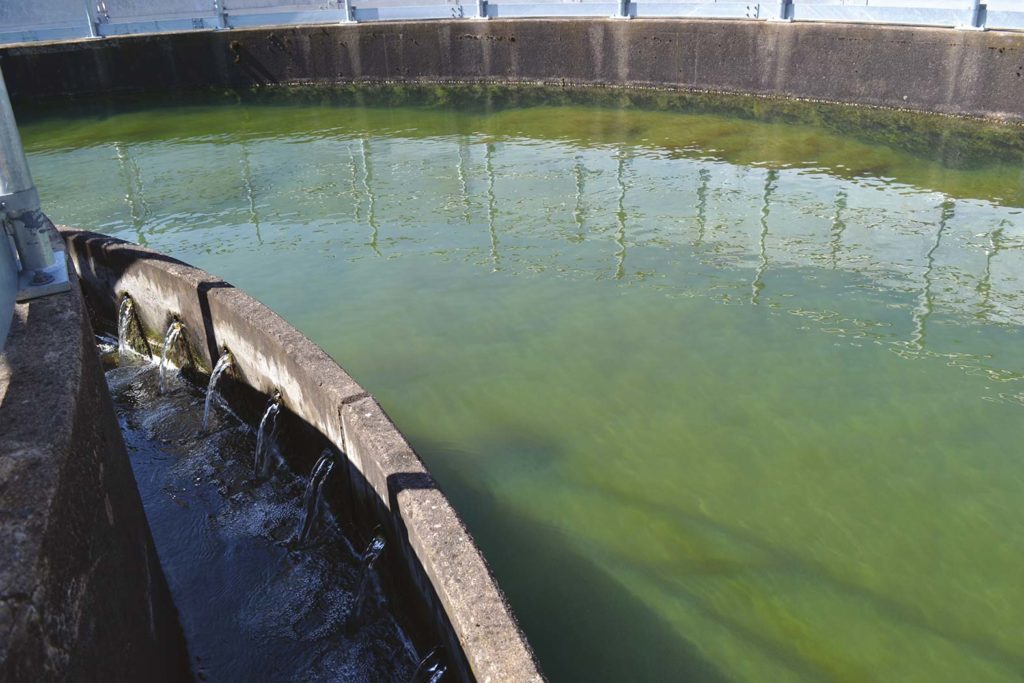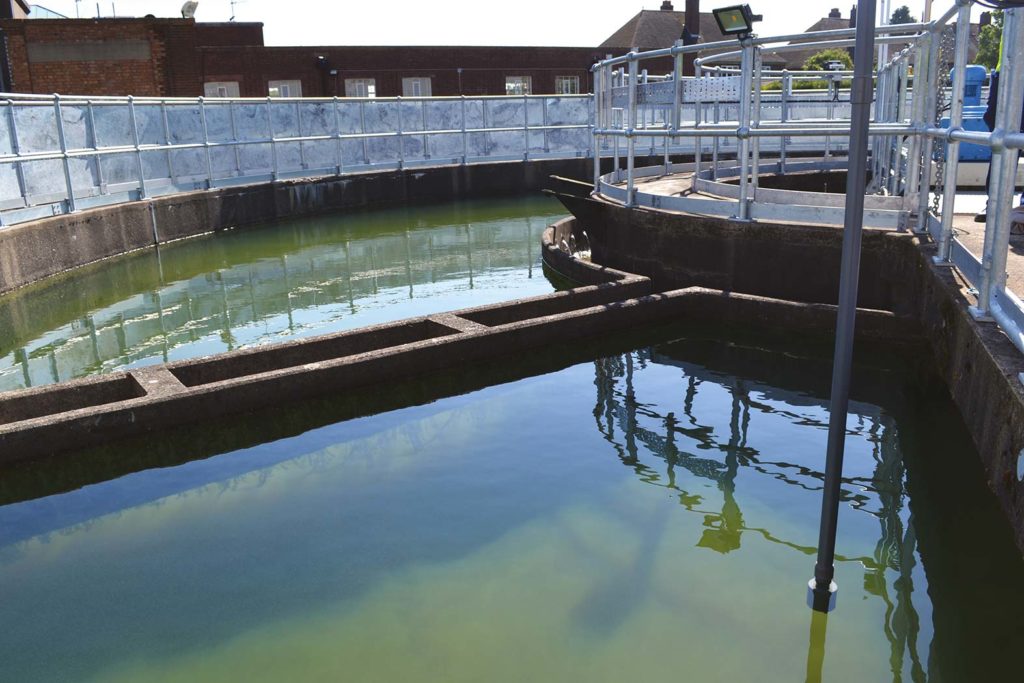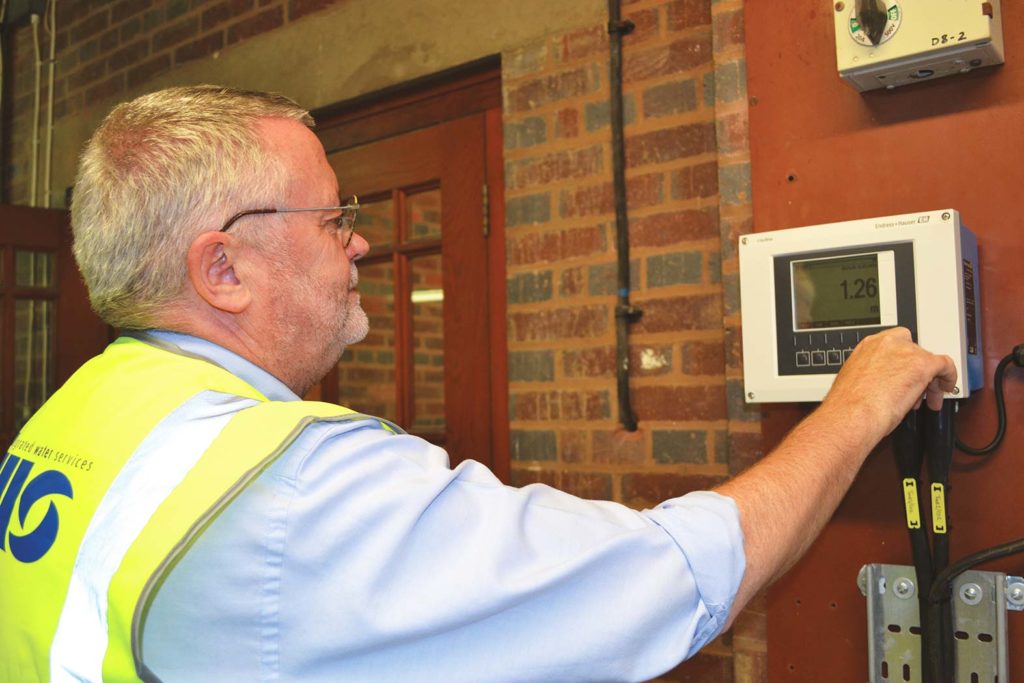Sensor trial proves successful for South Staffs Water
South Staffs Water supplies high-quality drinking water to approximately 1.3 million people and around 35,000 commercial customers over 1,500 square kilometres in the West Midlands, South Staffordshire, South Derbyshire, North Warwickshire and North Worcestershire areas. The company obtains water from three sources: Blithfield Reservoir, the River Severn and groundwater from 25 sites across the supply area.
“We’re really impressed. The system has been giving us a very reliable level measurement.”
Darren Compton, Senior Technician, Northern Production Unit South Staffs Water

The challenge
Each of the four accelators used at South Staffs Water’s Seedy Mill treatment works are over 60 years old and still running on original equipment. During 2013 the company began a process of refurbishment, starting with accelator number one. As part of that process, the company wanted to investigate what efficiency savings and operational improvements could be made, including automating the measurement of the sludge blanket. The creation and removal of the sludge blanket is an important part of the water treatment process: it ensures small particles such as dirt, bacteria and metals are taken out of the water. It is created by adding carefully controlled amounts of chemicals to the water, causing the small particles in the water to stick together, forming flocs that sink to the bottom. The flocs settle as sludge at the bottom of the accelator, where it is removed. “The idea of the refurbishment was to update all the mechanical and electrical components on the accelator,” explains Senior Technician Darren Compton. “As part of that we wanted to see if we could improve the operation of the clarifier itself by bringing in some new technology. We particularly wanted to be able to monitor the blanket – which is critical to the operation of the accelator – remotely; in fact we wanted to be able to do as much as possible from our SCADA system.” Historically, monitoring the sludge blanket had been a manual process, with technicians having to physically inspect the accelator at regular intervals. Using measurement instrumentation had proved unsuccessful in the past, as Darren Compton explains: “We’ve used an American sludge tracking system which, although better than anything else we’ve tried, was very difficult to set up and difficult to run. As the water density changed throughout the year with the change in temperature it would affect how the instrument operated and we kept having to make adjustments.”


The solution
Endress+Hauser supplied South Staffs Water with its ultrasonic interface sensor Turbimax CUS71D on trial with a process guarantee. The CUS71D provides fast and continuous in-situ measurement of any sedimentation zone like sludge blankets. Used in conjunction with the Liquiline CM44x transmitter, it produces the level (distance from the bottom of the accelator to the sludge blanket) or range (distance from the water line to the sludge blanket) measurement and sends digital or analogue communication signals to the customer’s data acquisition system. “It’s been very good, very reliable,” says Darren Compton. “We’re really impressed! I made a couple of slight changes in the early days as the sensor was picking up the wispy edges of the blanket rather than the main body, but since then I haven’t needed to touch it. It’s been giving us a very reliable level measurement.”

The benefits
Having such a reliable measurement improves product quality and reduces wastage, as it can be used to control the de-sludging of the accelator. “De-sludging is key to controlling the blanket level and getting the best water quality you can, but obviously you don’t want to do it too often because you’re wasting water,” clarifies Darren Compton. “We can de-sludge the newly refurbished accelator less than the old ones because the guys can keep a much closer eye on the blanket. They don’t have to walk over there every hour or so to physically have a look at it so they feel more confident in pushing the de-sludging out a little bit more; that’s a big cost-saving.” The ability to monitor the sludge blanket remotely is one of the main benefits for South Staffs Water, not only due to the cost-saving. Darren Compton says: “There’s an inherent risk whenever the shift controllers leave the desk because they’re not ‘steering the ship’; the less they have to do that the less risk there is to the site.” The company has been so impressed with the results of the trial they’re looking to order an additional complete system for a second accelator and three sensors with a single muti-channel transmitter for three sludge thickeners. Due to the reliability of the measurement it’s also been suggested that the de-sludging process could be automated in future to further improve the process.
For more information please email sales@uk.endress.com or call us on 0161 286 5050



